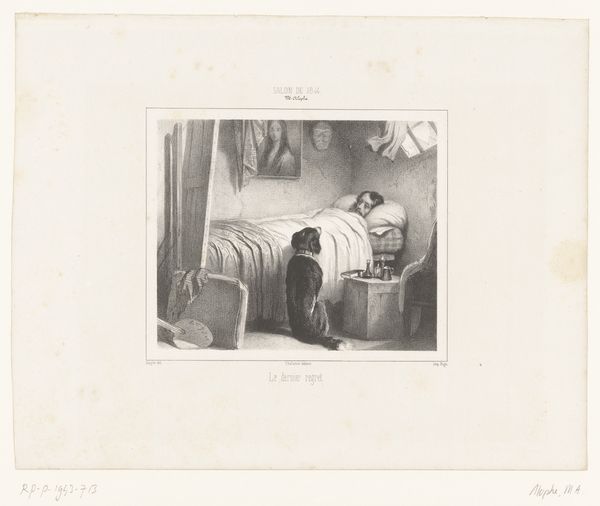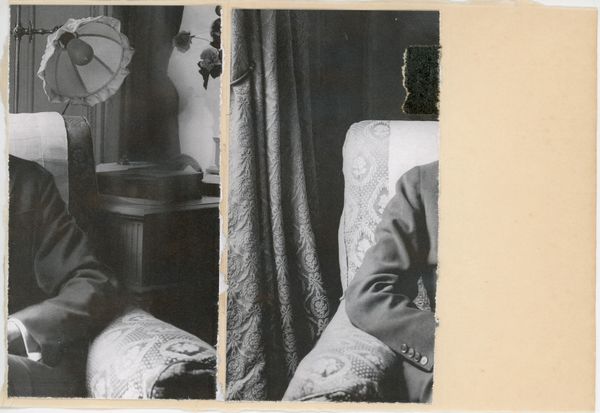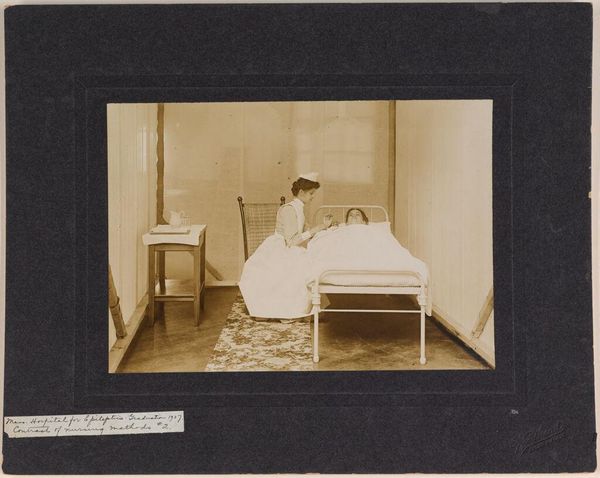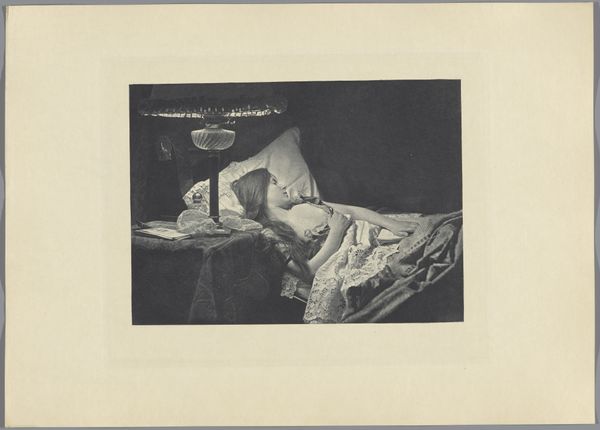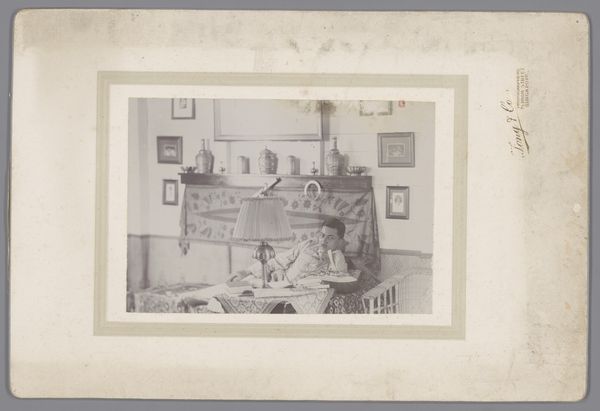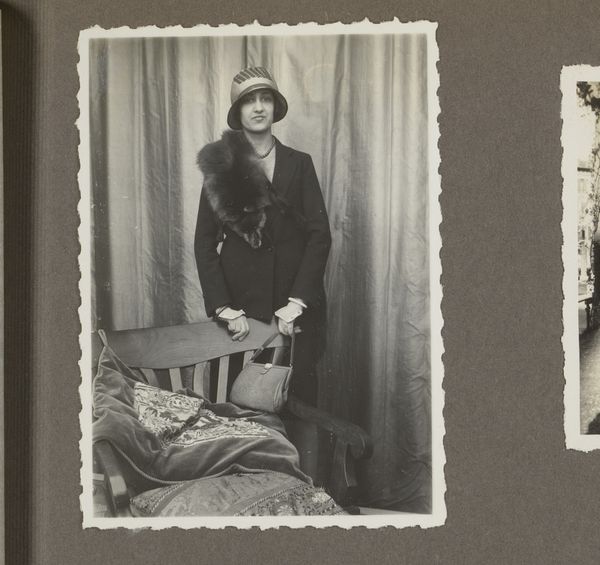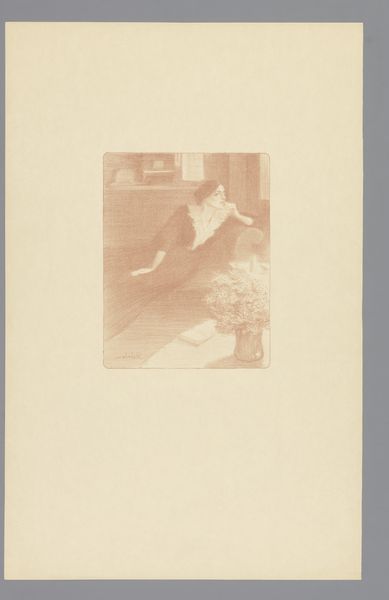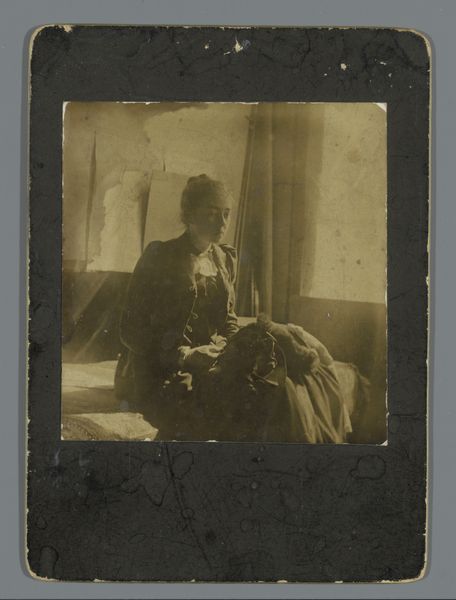
Dimensions: height 167 mm, width 210 mm, height 235 mm, width 146 mm
Copyright: Rijks Museum: Open Domain
Editor: This photograph, "Kinderportret van prinses Juliana," taken in 1912 by Guy de Coral & Co., captures a young princess. There's a dreamy, almost sentimental quality to it. It makes me wonder about the role of royal imagery. How do you interpret this work, especially considering the time period? Curator: This photograph operates on many levels, certainly including the political. During the early 20th century, royal portraiture was vital for shaping public perception of the monarchy. This particular photograph offers a glimpse into the personal life of Princess Juliana, humanizing her and, by extension, the royal family. Think of how carefully constructed these images would have been to foster a sense of connection between the monarchy and the public. The “impressionistic” quality you noticed contributes to a soft, intimate feeling, almost domestic. Editor: So it’s a crafted intimacy? It feels genuine, but perhaps that's the point? The setting, a comfortable chair, also speaks to a certain level of carefully planned accessibility, doesn’t it? Curator: Precisely. The setting, her posture, and even the subtle smile are all carefully constructed elements designed to project a particular image of the princess, one of innocence, accessibility, and warmth. How do you think this contrasts with formal royal portraits? Editor: The formality would create distance, wouldn’t it? Here, it’s almost like we're invited into her private world, reinforcing her connection to the people rather than emphasizing her status. It's quite strategic when you consider the changing social landscape of the time. Curator: Exactly. In an era of growing social and political change, photographs like these served to reinforce the monarchy's relevance and cultivate a sense of national identity and stability. Something worth considering today, isn't it? Editor: It definitely reframes my understanding, seeing it not just as a simple portrait, but a piece of political communication as well. Curator: Indeed. It's a powerful reminder that even seemingly candid photographs can be deeply intertwined with broader social and political forces.
Comments
No comments
Be the first to comment and join the conversation on the ultimate creative platform.

